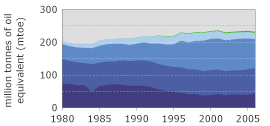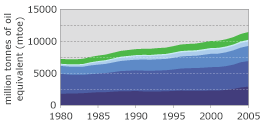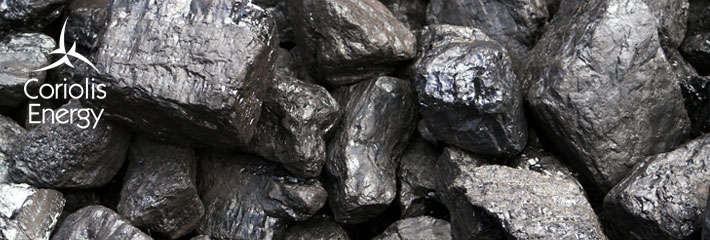

Fossil Fuels
While energy consumption in the UK has broadly plateaued international demand (driven largely by industrial growth in China, India and other emerging economies) continues to rise and by 2030 this is expected to have increased by some 55%.
Currently over 80% of this demand is met by fossil fuels (oil, gas and coal) but these resources are finite and it is expected that, within the next 30-40 years, we will begin to see shortfalls in supply.
A range of measures will inevitably be required to respond to this, including step changes in energy efficiency, however renewable forms of energy are expected to play an important role in bridging the gap.
Of the renewable energy options available, wind farms are currently the most cost-effective and immediately deployable. Once up and running these can tap into an inexhaustible supply of natural energy.
As well as helping combat climate change therefore, wind farms are expected to become an increasingly important source of energy in their own right as fossil fuels become scarcer and more expensive in the years to come.
Oil
Oil production currently stands at 82 million barrels a day(iii) and meets some 35% of world energy demand(ii).
The current global consumption rate is over double the new discovery rate and proven reserves are now only sufficient for about 40 years. Over 70% of these reserves are concentrated in the Middle East and former Soviet Union whereas these regions account for little more than 10% of global demand(iii).
Consumption is forecast to rise from 84 to 116 million barrels a day(iii) by 2030 (an increase equivalent to three times the entire annual output of Saudia Arabia). While the IEA anticipates that supply can be increased to meet this demand, other organisations are less optimistic and predict an "oil peak" being reached much more quickly.
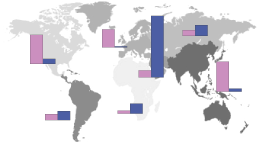
| Share of global demand | Share of global reserves |
Gas
The use of natural gas has increased dramatically in recent years and this now accounts for around 21% of world energy demand(ii).
The global consumption rate overtook the new discovery rate in 2002(iii) and proven reserves are sufficient for approximately 60 years. As for oil, over 70% of known reserves are concentrated in the Middle East and former Soviet Union, though consumption is much more evenly spread.
Global demand is forcast to rise by almost 70% to 4,780 billion cubic metres a year by 2030(ii), most of which is anticipated to be met through increased production in the Middle East and Africa.
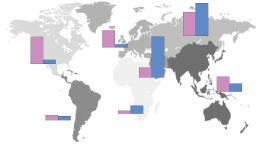
| Share of global demand |
Share of global reserves |
Coal
Coal is a much more evenly distributed resource than oil and gas and, until being overtaken by oil in the 1960s, was the largest source of energy. Today it accounts for 25% of total energy demand, though provides around 40% of fuel used for electricity production (and up to 70-80% in emerging economies such as China and India due to their indigenous reserves)(ii).
Reserves are currently believed to amount to 910,000 million tonnes(iii) (an estimate reduced by some 170,000 million tonnes in the last 20 years) and it is generally accepted that no substantial new deposits are likey to be found. Global demand is forecast to increase from 4,100 to 7,200 million tonnes a year by 2030(ii) and, depending on the level of subsequent growth (including as a substitute for other dwindling fossil fuels) these are unlikely to last much beyond the end of the century.
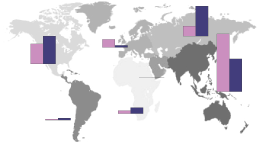
| Share of global demand | Share of global reserves |
